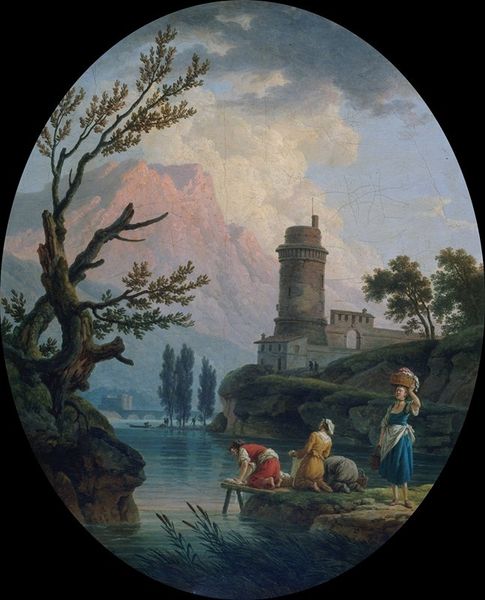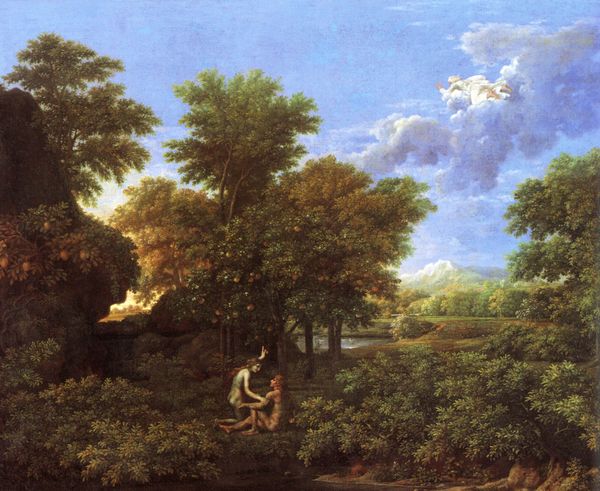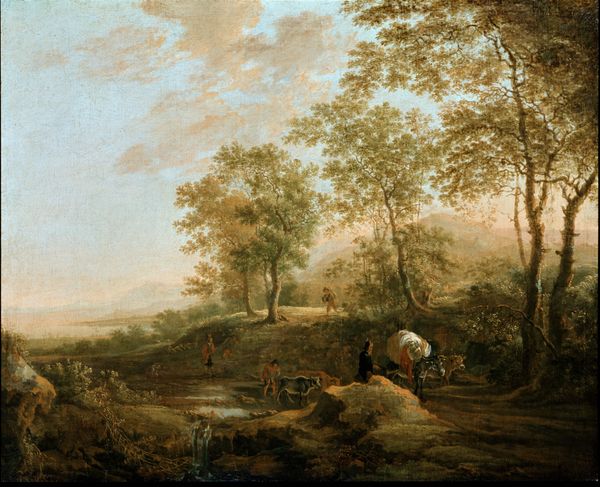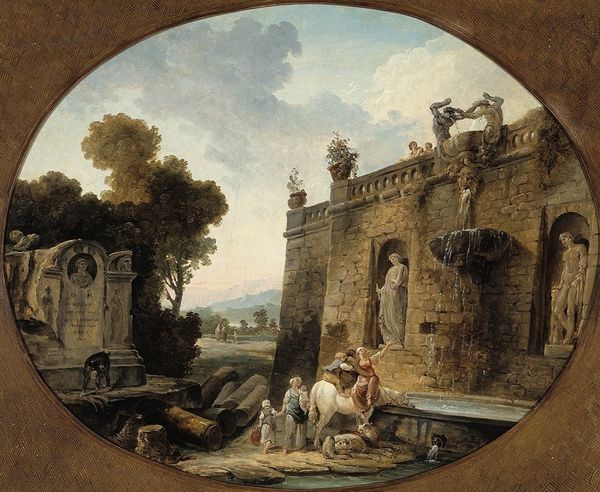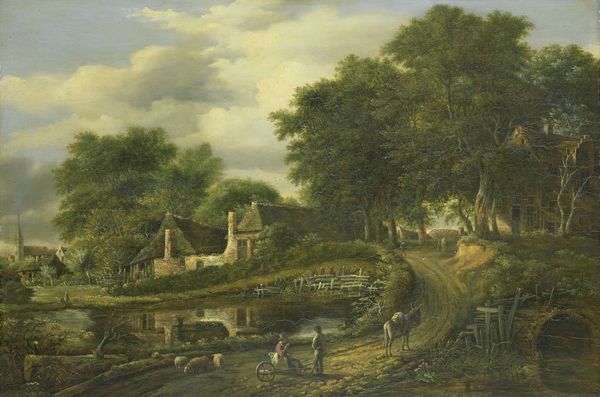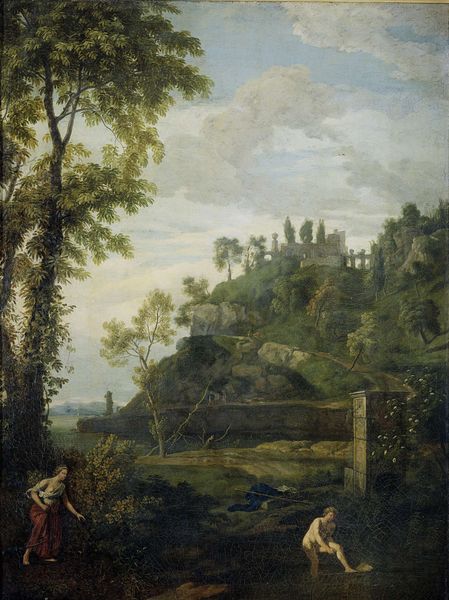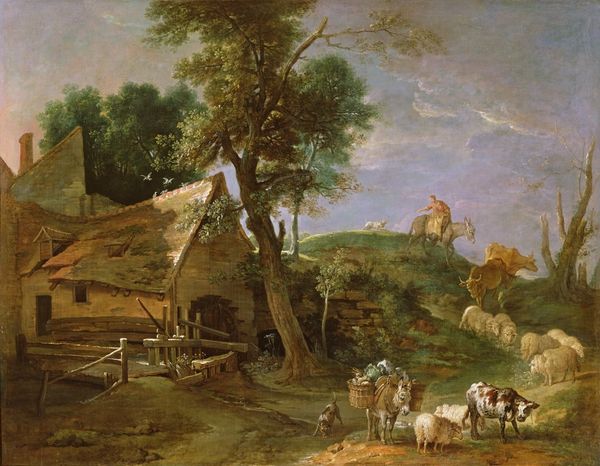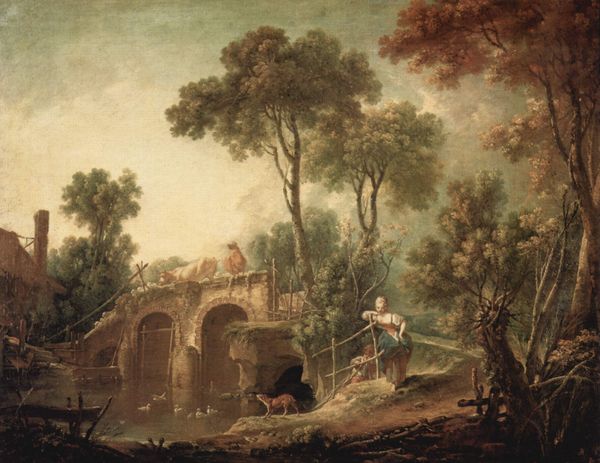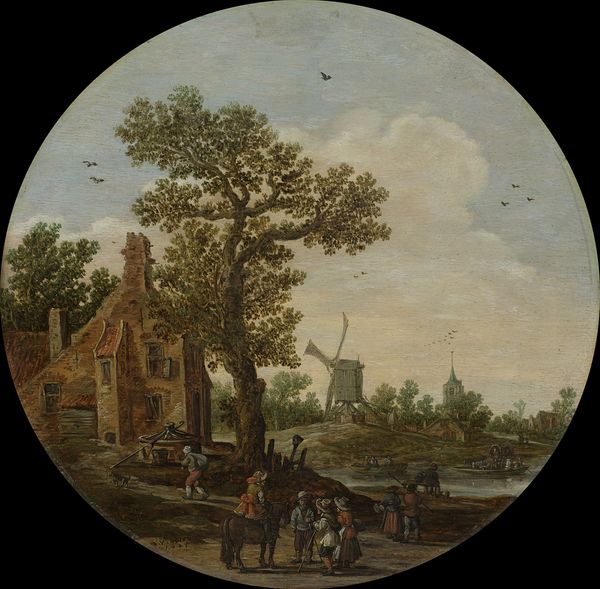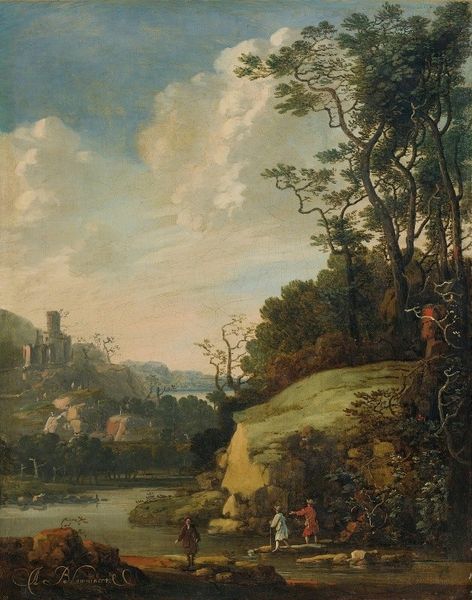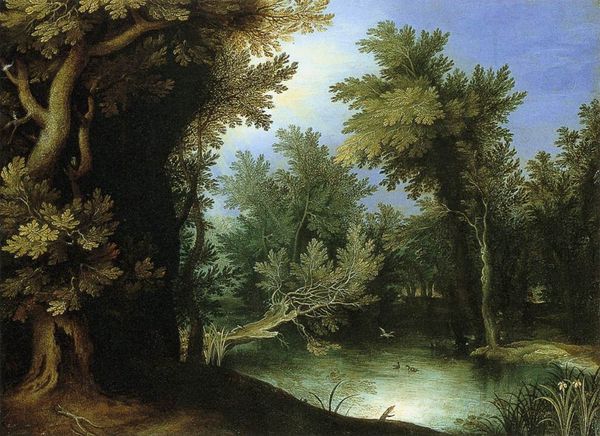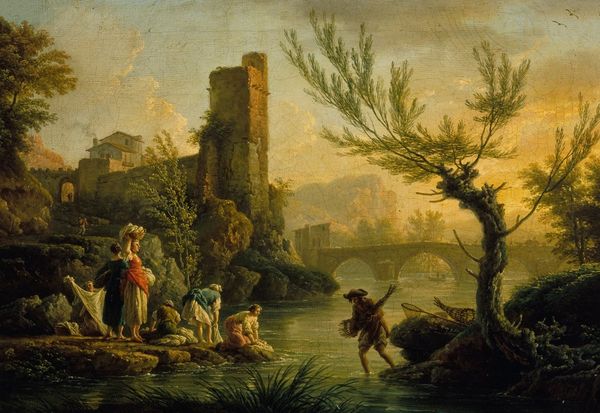
painting, oil-paint, watercolor
#
painting
#
oil-paint
#
sculpture
#
landscape
#
oil painting
#
watercolor
#
water
#
genre-painting
#
watercolor
#
statue
Dimensions: 59 x 47 cm
Copyright: Public domain
Editor: Hubert Robert's "The Footbridge," painted in 1775 with oil paint, presents such a serene and almost idyllic scene. The craftsmanship in rendering the stonework and the bridge itself is really striking. What do you make of it? Curator: Immediately, I'm drawn to the social aspects of its construction and context. Notice the artist working, actively constructing the image within the image? The painting then becomes about the means of representation itself, the labour involved. Editor: I see what you mean. He’s literally crafting what we're looking at. Curator: Precisely. Think also about the materiality of the painting. Oil paint, the support structure, the labour to produce those pigments and manufacture a canvas. Who was consuming this image and what did that access signify? Was this "high art" or closer to the decorative object? It all ties to questions of production, ownership, and consumption during that era. What purpose does the painting as a physical commodity serve? Editor: It's interesting to consider that, shifting the focus from just aesthetics to its existence as a crafted object within a particular economic system. Curator: Yes, and consider the consumption of landscape. It’s almost an advertisement for leisure. Does it inspire questions of the labor used to construct the idyll for which we so admire, then? How is the act of its construction represented within the painting? Editor: So much more than just a pretty picture! I'm definitely rethinking how I see it now, appreciating the artist's role and the historical forces that shaped the artwork itself. Curator: Exactly! By examining the materials, means of production, and socio-economic context, we unlock layers of meaning and truly begin to see.
Comments
No comments
Be the first to comment and join the conversation on the ultimate creative platform.
